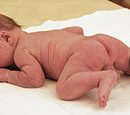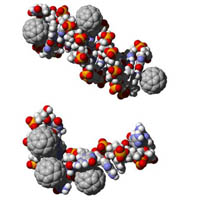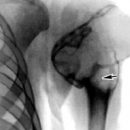What is a disease of maple syrup or leucine? How she manifests in children? How this disease is treated? Learn from article.
Content
Leucine
For the first time, this disease is described in 1954. In the English and American literature, it is more known as the disease of the maple syrup due to the smell of urine, which is similar to the smell of a syrup from maple wood.
Causes
This hereditary disease is associated with a violation of the exchange of such amino acids, such as leucine, isoleucine, valine: the child's body does not absorb these amino acids. The characteristic smell of urine is associated with the presence of a substance generated from leucine.
Symptoms
The disease begins to appear after 3—14 days after the birth of a child: the kid refuses food, quietly crying, there may be frequent joins and even vomiting.
 If you do not apply for medical assistance, twitching individual muscle groups can develop, muscle tone increases, in connection with which the whole body is pulled out, and the lower limbs cross. The disease quickly progresses and in most cases ends with death in the first year of life. If children live to later age, mental retardation is the main manifestation of the disease.
If you do not apply for medical assistance, twitching individual muscle groups can develop, muscle tone increases, in connection with which the whole body is pulled out, and the lower limbs cross. The disease quickly progresses and in most cases ends with death in the first year of life. If children live to later age, mental retardation is the main manifestation of the disease.
With a serious course of the disease, disorders of breathing and consciousness may occur, and if the treatment has not been conducted from the first week of life, the disease forecast is bad. Such children are dramatically lagging behind in weight and psychomotor development.
The diagnosis is made according to characteristic symptoms of the disease, the smell of urine and the content of leucine, isoleucine, valine in the urine.
Treatment
It consists in reducing the level of leucine, isoleucine and blood plasma valine, for which a special diet is applied, in which a particular mixture is prescribed instead of a protein, consisting of a mixture of 18 amino acids in the proportion, as in the female milk. Fats in such a mixture are present in the form of corn oil, and carbohydrates are replaced by dextrin-maltose. Minerals and vitamins are also added. As soon as the overall condition of the child improves, appetite appears, the muscular tone is normalized, a small amount of cow's milk is introduced into the diet. Fruits and vegetables, which also contain protein, but in small quantities, it is allowed to give the child from 3 months. AT 6—8 months in the diet are introduced gelatin that does not contain specified amino acids. From 9.5 months Daily portion of milk is 120 ml.
The content of leucine and isoleucine in products (in grams per 100 g of product), respectively:
one. Women's milk — 0.108 and 0.062.
2. Milk cow — 2,278 and 0.182.
3. Kefir — 0.263 and 0.173.
4. Cottage cheese — 0.924 and 0.548.
five. Chicken egg — 1,130 and 0.83.
6. Meat beef — 1,730 and 1.06.
7. Chicken meat — 1,620 and 1,117.
eight. Beef liver — 1.543 and 0,800.
nine. Cod — 1,222 and 0.879.
10. Rice croups — 1,008 and 0.369.
eleven. Semolina — 0.364 and 0.258.
12. Buckwheat — 0.702 and 0,301.
13. Oatmeal cereals — 0,672 and 0.302.
fourteen. Croup-ray — 1,040 and 0.244.
fifteen. Pearl cereals — 0.584 and 0.258.
sixteen. Peas — 1,204 and 0.780.
17. Wheat flour — 0.567 and 0.29.
18. Pasta — 0.690 and 0.380.
nineteen. Rye bread — 0.275 and 0.146.
twenty. Wheat bread — 0,550 and 0.25.
21. Biscuit — 0.357 and 0.171.
22. Potato — 0.107 and 0.083.
23. Carrot — 0.061 and 0.034.
24. White cabbage — 0.059 and 0.040.
25. Oranges — 0,019 and 0.019.
26. Lemons — 0,013 and 0.016.
27. Apple juice — 0,015 and 0.009.
28. Orange juice — 0.150 and 0.010.
29. Lemon juice — 0.016 and 0.014.









